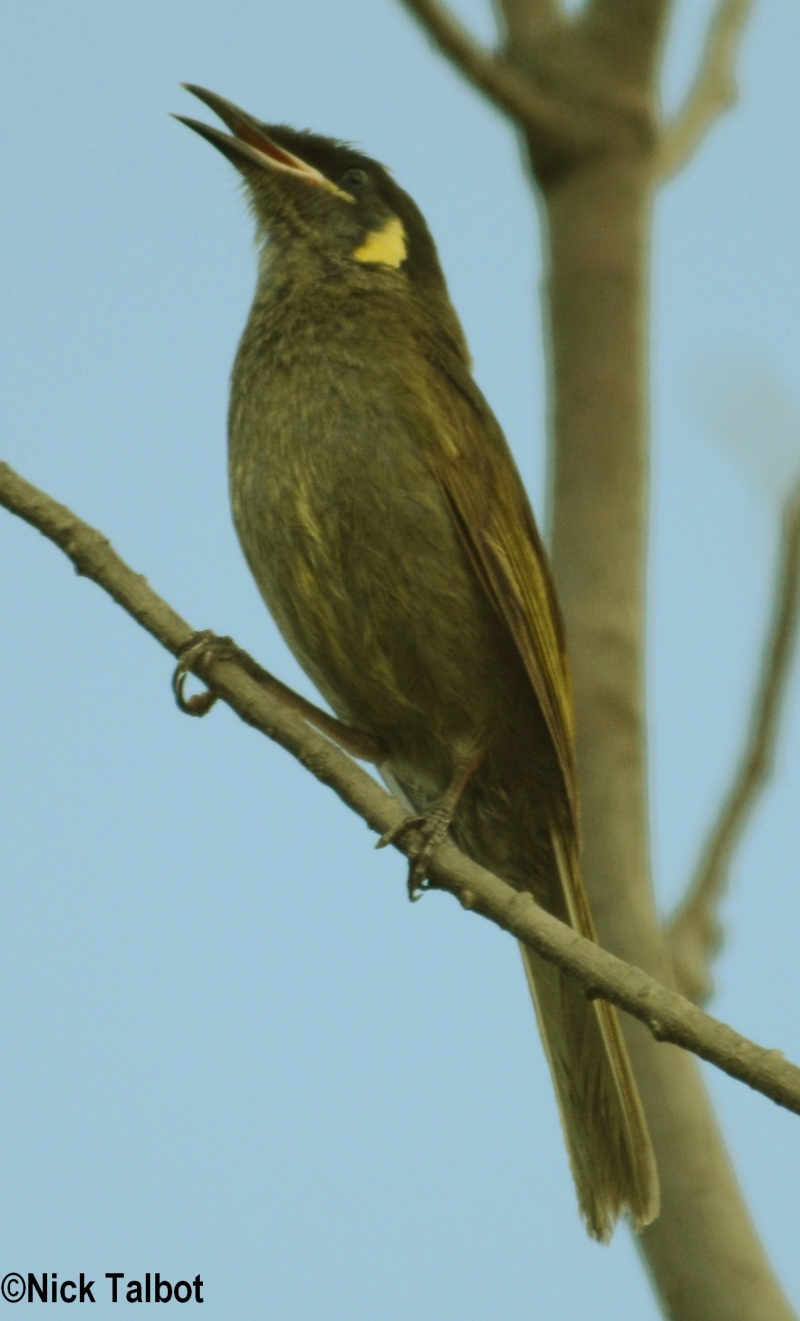Colours
Distinguishing features
It is dark greenish grey in colour, with a creamy yellow gape (fleshy corners of the mouth). It has large, yellowish crescent-shaped ear patches, which identify it from other honeyeaters other than similar but smaller species in tropical Queensland.
In flight, the pale yellow edges of the flight feathers can be seen. The bill is black and the eye is blue-grey.
Both sexes are similar in appearance. Young birds are similar to the adults, but have brown eyes. (Wikipedia)
Size
- From 20 cm to 22 cm (Length of specimen)
Wingspan
- Wingspan data is not yet available.
Synonyms
Similar taxa
-
Animalia:
Yellow-spotted Honeyeater (species: Meliphaga (Meliphaga) notata)
The Yellow-spotted Honeyeater is like Lewin's Honeyeater but it has paler plumage and the yellow marking behind the eye is rounder, with less of a crescent shape.
Distribution
Distribution and habitat preferences
It the ranges along the east coast of Australia. It prefers the wetter parts of eastern Australia, from northern Queensland to central Victoria. It is found in both rainforest and wet sclerophyll forest, and often wanders into more open woodland.
It is a fairly sedentary species, tending to stay in the same area all year round, although there is some altitudinal migration to lower elevations in the cooler winter months. (Wikipedia)
Diet
They feed mostly on fruits, favouring berries and small fruits, but also eat insects and nectar. Birds are normally seen alone, but may form loose groups of up to 10 birds. They feed in the upper branches and on the trunks of trees. Some insects are caught in flight. (Wikipedia)



